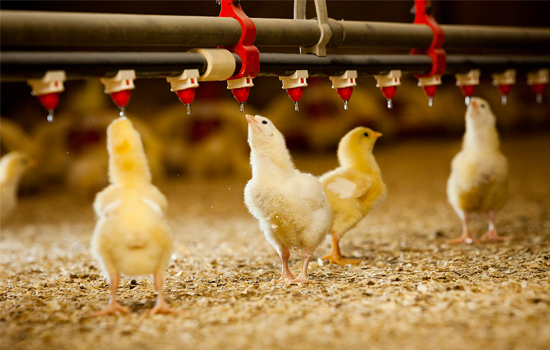Chicken house ventilation management
- font size decrease font size increase font size
It is well known that for chicken houses that use chicken farming equipment, ventilation management of the house is very important. So what should we pay attention to in the management of the house?
1. Seal inspection of chicken houses. In summer, the effective ventilation of the house is to maintain the airtightness, so that fresh air can enter the house (side wall vent or wet curtain) from the required place. Therefore, the site is required to check the tightness of each house, especially the doorway in the middle of the house, the slab, the connection between the wet curtain and the house. Longitudinal ventilation must ensure that air should be from both sides of the end of the house, not just from one side into the house. Air entering the house from both sides can fully mix the air inside the house without creating a dead angle.

2. The chicken house is under negative pressure management. Only a certain negative pressure can be formed in the chicken house to ensure that the vents entering the house have a certain wind speed. The horizontal ventilation requires a wind speed of 3 meters to 5 meters per second, and the longitudinally ventilated wet curtain. The wind speed of the curtain is 1.5 meters to 2 meters per second, and the wind speed of the chicken back requires 2 meters to 3 meters per second. The maximum wind speed of the chicken back cannot exceed 3 meters per second, more than 3 meters, and the chicken is prone to adverse symptoms. The field area should observe and record the negative pressure of the house to prevent the house from being under negative pressure. In addition, the intake pipe connected to the negative pressure controller should not be placed in the work space in the middle of the house, it must be placed outside and connected to atmospheric pressure.
3. Ventilation management of the chicken house. If the temperature difference between day and night is too large or the weather changes, it is necessary to use mixed ventilation to ensure the temperature of the house. Therefore, when transitioning from a horizontal vent to a longitudinal vent, it is important to pay attention to the management of the air inlet. That is, when the fan is switched from the first stage to the second stage or the third stage, the corresponding air inlet must be adjusted to reduce the negative pressure of the house, so that the wind speed is uniform and the temperature is consistent before and after the house. For example, gradually open the area of the wet curtain and increase the area of the vent, otherwise the negative pressure of the house will be too large, which will affect the efficiency of the fan.

